Imagine walking up to a lemonade stand and purchasing a lemonade, only to walk away and find out it tastes like rainwater and mold. On a scale from 0 to 10, you’d probably rate your customer satisfaction an absolute 0.
No matter how complex your business model is or what you sell, it boils down to the same lemonade stand principle. Customers come first and if you want to make sure they like what you do, you need to measure their satisfaction levels.
Today, we’ll show you how to do that. We’re going to identify the key customer satisfaction metrics each business needs to track and show you how to measure each one.

Benefits of measuring customer satisfaction metrics
Measuring customer satisfaction regularly brings many benefits. First and foremost, happy customers are loyal customers. Customers tend to return when a service or product experience is satisfactory.
Developing a customer satisfaction process will help you to find unhappy customers and discover what went wrong in their experience.
Also, it is crucial for businesses to interact and communicate with their customers on a regular basis. This way, you can make sure that they will get the experience they expect. Moreover, when using great customer satisfaction tools, you keep your finger on the pulse.
There is now a higher-than-ever level of awareness of this aspect, and businesses are noticing that investment in improving customer experience is a low-cost opportunity to generate a high profit while building an amazing customer experience.
If you want to get some more insights on the value of customer satisfaction, check out our infographic on the importance of customer satisfaction for more data points.
Here’s what our partners at Agendor said about measuring their customer satisfaction levels:
“If [the users] love or hate something, they write it down, which was unlikely to get from a regular email conversation. Therefore, what convinced us to switch to Survicate were, in fact, advanced website and in-product surveys that can be triggered at the right moment.”
“Once we launched the new survey and broadened the target group to entire teams that use Agendor, our response rate increased significantly. This also boosted our Net Promoter Score and response rates, as actual users finally got to voice their opinion.”
Tulio Monte Azul, CTO and Product Manager at Agendor
"Agendor’s customers didn’t just provide a score: they started giving detailed feedback about their overall experience with the company using open-ended questions. "
As a result, the company found out that its customers expected a much faster response from our customer support team than what it provided at the time.
The survey results were shared with the entire company and used to design better processes.
If you’d like to learn more about how Agendor used the customer insights it gathered with Survicate to improve its product performance, you can read the full case study.
Below you will find some crucial customer satisfaction metrics you need to track to successfully implement a customer satisfaction process.
5 customer satisfaction metrics you need to track

1. Net Promoter Score
One of the most important customer experience metrics for measuring your efforts in customer service is the Net Promoter Score.
NPS stands for an index that ranges from -100 to 100, reflecting the willingness of customers to recommend a particular service to people they know.
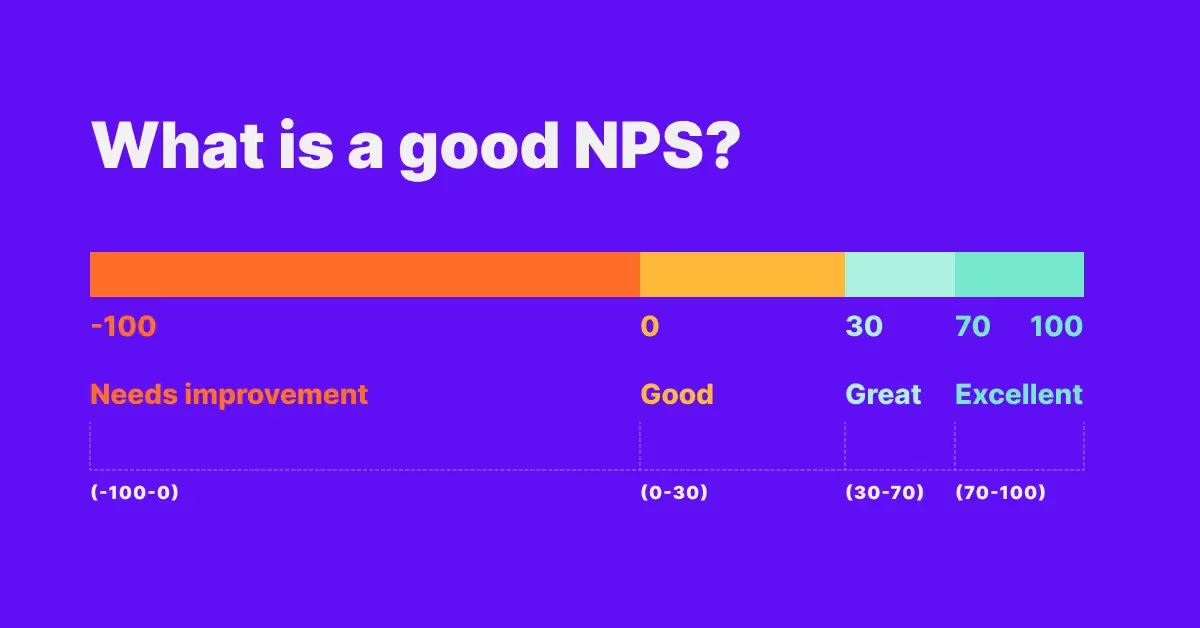
Try our free NPS calculator to see what your score is and compare it against the NPS industry benchmarks.
To measure NPS, ask customers a simple question about the likelihood of them recommending your product using an 11-point scale (from 0 to 10).
Read more: NPS Calculation: How to Calculate the Net Promoter Score (NPS)
The NPS question goes as follows:
On a scale from 0 to 10, how probable is it that you would recommend our service to a friend?
By using this kind of scale, you can place customers into three categories:
- NPS Detractors: those who rated their likelihood to recommend you with a score of 6 or lower. They’re not big fans of your product or service.
Read more: NPS detractors and how to turn them into promoters. - Passives: these are the customers who selected a score of 7 or 8. They could be willing to recommend your product or service but wouldn’t hesitate to switch to another brand if their offer was better.
- Promoters: those who picked 9 or 10. These are your brand’s evangelists. They’ve had repeated experiences with your product or service and would happily recommend it to others.
To measure NPS, simply subtract the percentage of detractors from the percentage of promoters.
Intergiro, a Swedish fintech company that provides business banking products across Europe, sends an NPS survey to its customers twice a year.
Initially, the company was doing it via email, leading to a 70% spike in engagement. However, the best results arrived when Intergiro embedded the survey into its web application.
The fintech was also able to speed up feature validation by 50% and gained over 2000 new customers.
To find out more about how Intergiro achieved these results with Survicate, head to our case study.

Why do you need to measure NPS?
Many studies have already demonstrated that NPS results have a real and significant impact on business.
For example, the management at American Express started to evaluate their service reps using their NPS results. This led to a 10-15% increase in customer spending and a 4-5x higher retention rate. In an interview with Fortune magazine, Jim Bush, the Managing director of American Express, said:
"We’ve been able to show that increased satisfaction drives increased engagement with American Express products, and that drives shareholder value."
The above examples prove that monitoring NPS can significantly improve the bottom line. While in itself it is just a snapshot of customer sentiment, this metric facilitates adding more in-depth customer feedback by adding a follow-up, open-ended question.
It's a good practice to see how your score stacks up against other companies in your industry. Maybe you need to put some extra work into improving your customer experience, or maybe your NPS is so good you can make it into your USP (Unique Selling Proposition). Our 2023 NPS benchmark report will help you answer this question.
Read more: What is a Good Net Promoter Score (And Why It Matters Less Than You Think)
If you want to start measuring NPS today but you don’t have a clue where to start, we can help. Just use our survey template and collect your NPS score in a matter of minutes:
Or you can get some inspiration from CarWale. This brand sent out a total of 269 surveys, getting more than 3,500 responses total—and you can do the same.
2. Customer acquisition cost
CAC is another customer satisfaction metric that you should consider when measuring customer service quality and overall customer satisfaction. While it is more common in sales and marketing, it can also be crucial for customer satisfaction.
To calculate CAC, divide all of your marketing expenses by the number of customers gained in a particular period.
If the costs are too high, perhaps your marketing strategy and customer satisfaction factors need rethinking. You might be using the wrong platforms or selling to the wrong audience. In any case, figuring out your CAC is a superb starting point for your investigation.
Why do you need to measure CAC?
CAC is one of the main KPIs you need to analyze while your business is scaling up. It’s used for A/B tests of acquisition channels, and it comes in handy for customer segmentation.
Sometimes, all you need to do is amend something minor to increase customer experience and decrease acquisition costs
For example, this could be changing the onboarding design, the pricing structure, the features in the freemium plan, or even the design of your dashboard.
How can you reduce CAC?
The answer to this question depends on your unique situation and your starting CAC. However, there are five great methods for CAC reduction: improving website conversions, implementing buyer personas, using marketing automation and customer data platforms, investing in customer retention, and reducing customer churn.
3. Customer churn
Customer churn is one of the metrics every company should use to predict ups and downs and prevent negative outcomes such as a gradual loss of revenue.
It can also show you the company's condition and ability to handle the challenge of canceled subscriptions. It is also a common indicator of customer dissatisfaction.
Thankfully, many companies successfully reduced their churn rate, and you can follow in their footsteps.
Groove, a SaaS startup, decided to research the reasons their customers were leaving. The data-driven tactics it used helped it reduce its churn rate by 71%!
Another example of successful churn reduction is Mention, which managed to reduce its churn by improving and increasing communication with its customers. The company started using Intercom for customer support and better customer segmentation. It exceeded its goal by reducing churn by 22%.
There are many ways you can use to measure churn. Collect the necessary data so you can satisfy your customers and increase your retention rate with this survey template:
4. Customer Satisfaction Score
CSAT measures whether your product or service meets your customers’ expectations. Customers can assess their experience by answering the following matrix question:
“How would you rate your experience with your … (e.g., recent support requirement)?” on a 5-point scale from “Very Unsatisfied” to “Very Satisfied.”
The focus here is on a specific interaction. You can ask about the following:
- the quality of a specific interaction with your customer support
- the quality of the product delivery
- the overall customer service experience
As a result, you will be able to find the pain points that demand attention.
Looking for a quick start to measuring CSAT? You don’t have to spend hours on preparation. Instead, use this template:
Just place it on your website to start measuring your CSAT score with Survicate in minutes.
How can you measure CSAT?
To measure customer satisfaction with your business, simply tally up the respondents who answered “Satisfied” and “Very Satisfied.” The higher the score, the happier your customers are.
You can implement various strategies to achieve higher CSAT scores. Call Centre Helper has an example of proactive customer service:
"The key here is to contact your customers before they need to pick up the phone and contact you! To be effective, these contacts should be timely, personalized, and relevant to the consumer."
Nanorep advises setting clear expectations and then exceeding them: "Nothing is more frustrating for a consumer than wandering around in a digital world unsure of what to expect from a business, or when.
Let customers know upfront what your standards and practices are. (...) Removing the customers’ uncertainty about such common issues in customer service lets them know that a company is committed to their success and satisfaction.”
5. Customer Effort Score
The CES is used to measure how much effort customers have to put into certain interactions with your company.
The survey asks only one question:
[Product] made it easy for me to [do a job].
You can modify this question based on your needs. The respondents then choose one of seven answers on a scale from “Strongly Disagree” through “Neutral” to ”Strongly Agree.”
How can you measure CES?
To calculate the Customer Effort Score (CES), divide the total sum of your CES scores by the total number of responses. So, if you received 50 answers and got a total score of 200, your CES would be 4.
When the number is low, it means that your customers have to put too much effort into interacting with your business. Remember that the results are only indicators of your customers’ effort, and do not delve into justifications for choosing one score or another.
The "Stop Trying to Delight Your Customers" study published by the Harvard Business Review evaluated the predictive power of CSAT, NPS, and CES on customer loyalty and found that the Customer Effort Score outperformed the others.
According to the report, the power of the CES survey seems to stem from two factors: its ability to capture customer impressions at the transactional level (as opposed to NPS, which captures more holistic impressions of a company) and its ability to capture negative experiences as well as positive ones.
Today’s customers are busy and don’t want to have to jump through hoops to get the help they need, especially if a product breaks down or they have issues with service. Reducing customer effort makes life easier for customers and improves their impression of the brand and their overall customer experience.
Most importantly, it improves user activation and, by doing so, increases customer lifetime value.
If you need help with running effective customer satisfaction surveys, try this template for your next survey:
Measure your customer satisfaction with Survicate
Keeping your customers happy is one of the most important things you can do to improve your business.
Using the metrics listed in this article, you can assess the current level of customer satisfaction, increase retention, and reduce churn.
All of this is made easier by Survicate. On our 10-day free trial, you'll get access to all Business plan features. Sign up today and find out how easy it is to start collecting customer feedback!

.avif)






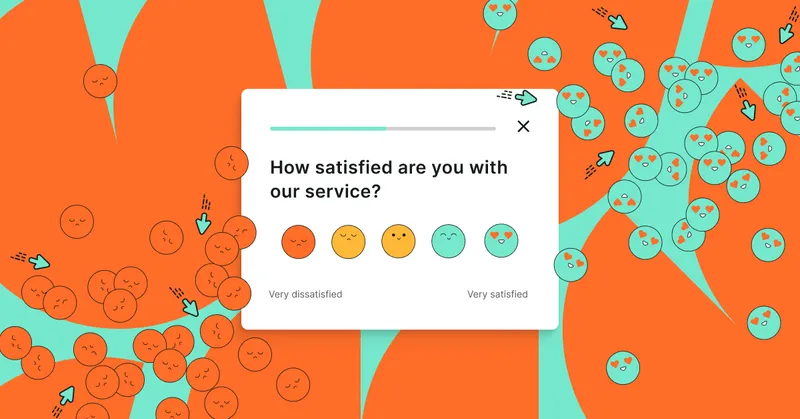
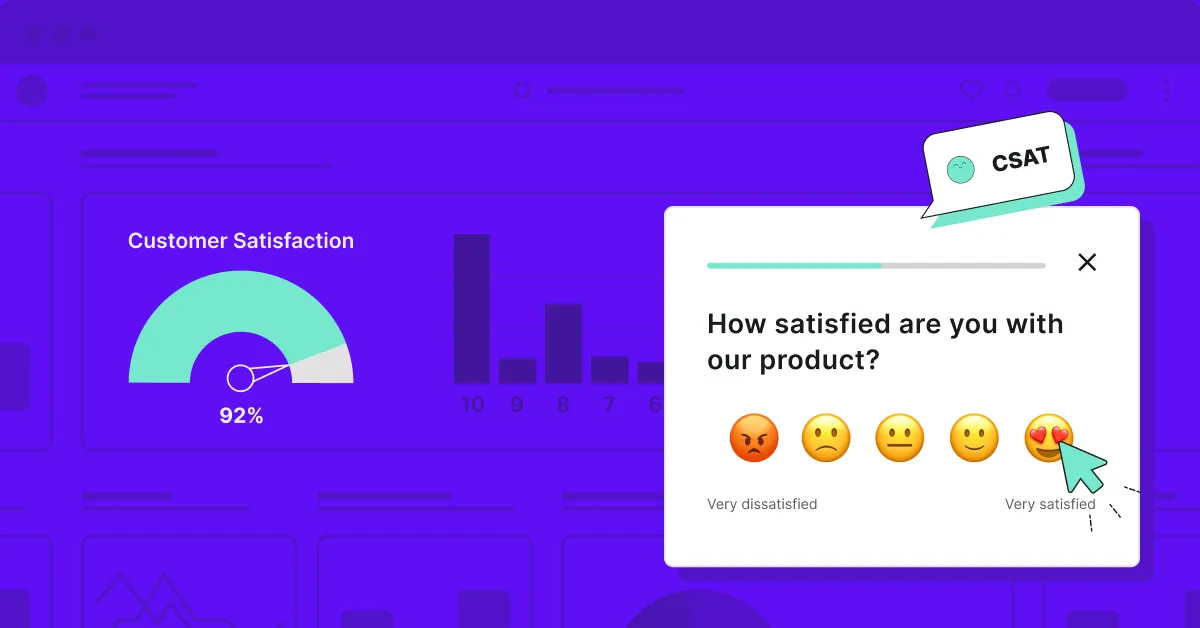
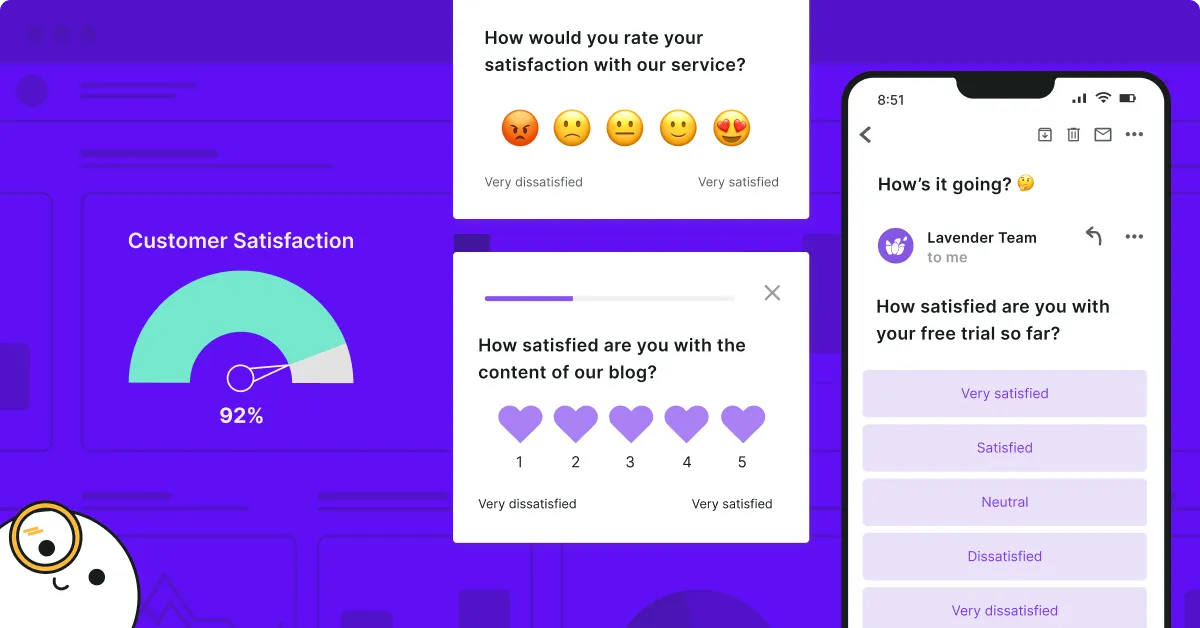
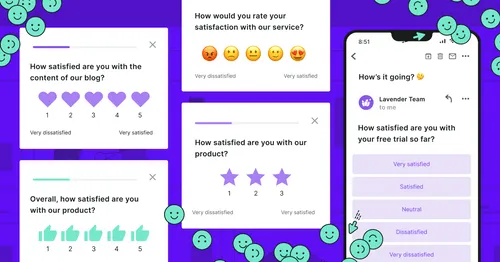
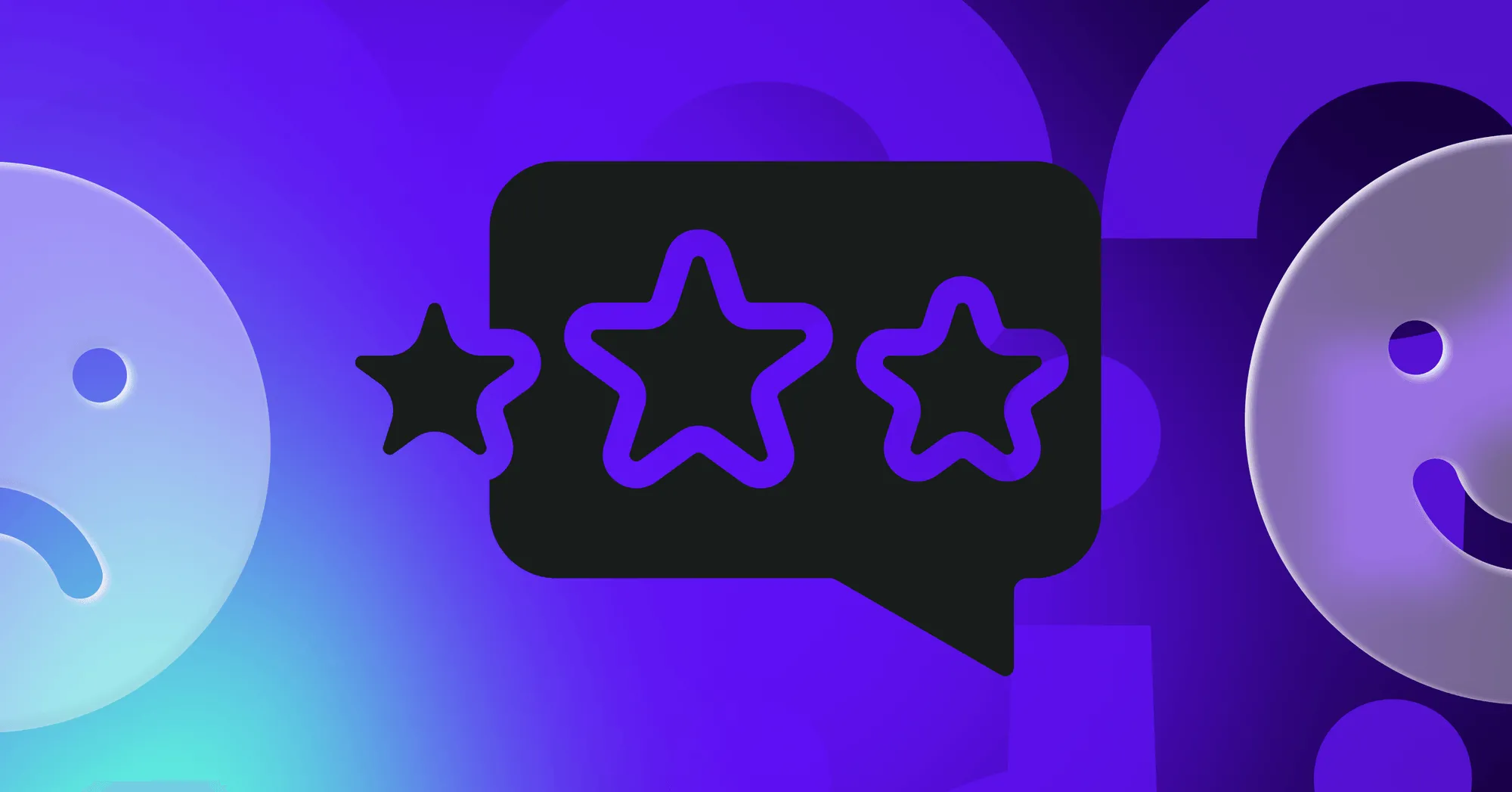
.svg)

.svg)



